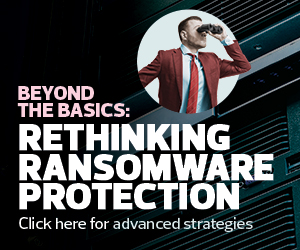1. Can we Use the Security Tools That Come with Our Cloud Platform?
Breach detection and data leakage are two types of security challenges that aren’t easily managed by standard cloud platform tools. For example, built-in data leak protection tools are often configured to recognize things like credit card and bank account numbers; K–12 tools can add specific requirements, such as detecting mentions of self-harm or inappropriate images and language.
Built-in tools may also assume that users have multifactor authentication, but that is not the case in every K–12 environment.
RELATED: Learn how cloud access security brokers protect student data in the cloud.
2. Why Do We Need This Type of Security Now?
It’s true that early adopters of online collaboration tools may not have seen a need for extensive security analysis tools, and were perfectly happy with the outcome. But with today’s changing security environment, more demanding school boards, and more open and accessible internet-connected tools, schools should revisit that decision.
3. Can We Use the Same Tools We Have for On-Premises Security?
In some cases, on-premises security tools, such as security information and event management and data loss prevention toolkits, may extend to cloud-based collaboration platforms. But this could be a difficult integration in a K–12 environment with resource and budget constraints.
Once a district has shifted most of its applications to cloud-based services, maintaining on-premises tools linked to a cloud platform will be a long-term maintenance liability.
Even with a substantial investment in on-premises tools, the switch to cloud computing may be a good time to shift security monitoring to the cloud as well.
Obviously, this will depend on how the mix of cloud and on-premises tools changes over time, but the more tools that move to the cloud, the greater the win from removing on-premises data center services.
4. How Do These Tools Protect Our Collaboration Platforms?
Add-on K–12 cloud security platforms make extensive use of the application programming interfaces that Microsoft and Google provide. APIs let them scan conversations, shared drives and emails, and control and monitor administrative tasks. The tools can also dive deep into the logging and reporting that the platforms use and help with administrative tasks, such as user provisioning and workflow management — again, focused on K–12 needs rather than enterprise capabilities.
DIG DEEPER: Here’s how Google creates a more secure workspace for teachers and students.
5. What is the Future of Cloud Collaboration Platforms for K–12?
This emerging market niche now has several vendors and a variety of approaches. Software suppliers from the network security, data leak protection, vulnerability management and SIEM marketplaces are all exploring how to meet K–12 needs by adding to existing toolkits. K–12 IT teams looking to protect their cloud-based collaboration tools should cast a wide net in researching products.










